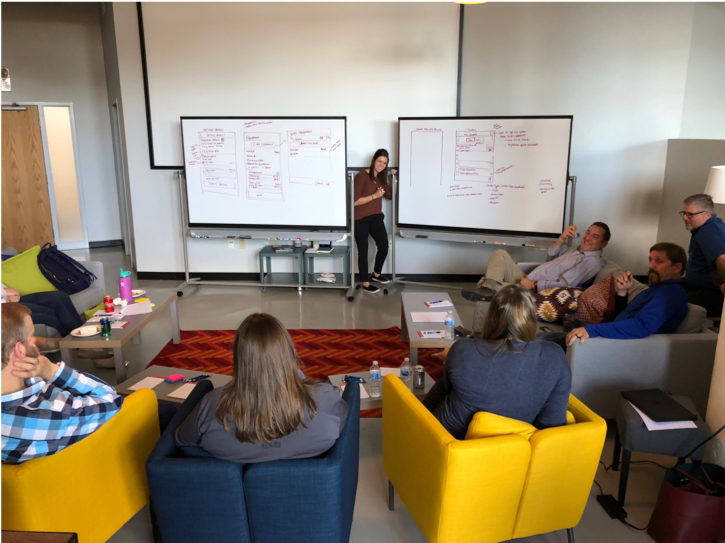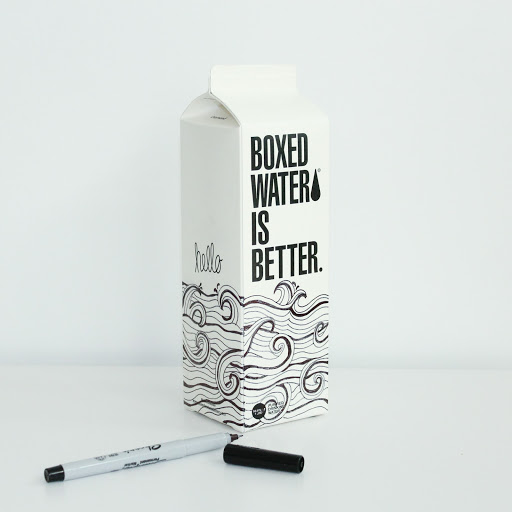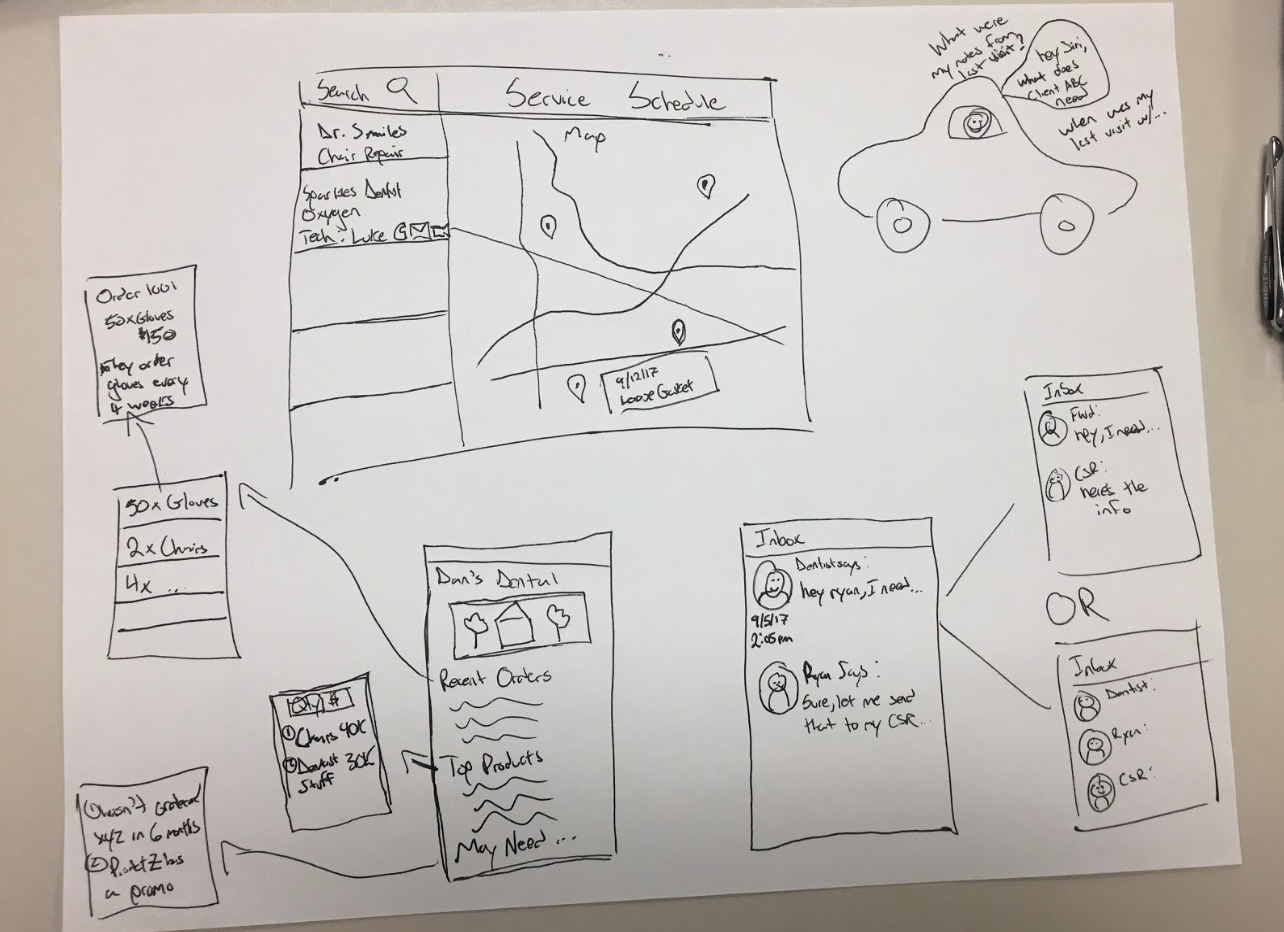At Sapphire 2019, Mindset announced our Design Solutions 2.0 offerings. Over the last decade, Mindset’s development engagements have begun with a Design Thinking session, ensuring that the customer experience is central to the project outcome. In order to help make Design Thinking workshops a success, there are four simple rules to keep in mind.
Before we dig into the four rules of Design Thinking, let’s start with a little bit of a primer on Design Thinking, and why we at Mindset are so obsessed with building better experiences for enterprise customers. Design Thinking is a process developed in the 1990’s within the higher learning community, including Stanford, and in tandem with companies like IDEO. It’s a user-centered design process that seeks to gain insights through direct user observations and find unique solutions to observed challenges. Design Thinking isn’t exclusive to software design and has been used to find new solutions to everything from kids’ toothbrushes to meal services for the elderly.
At Mindset, we use the Design Thinking process to make sure that before we start trying to find a solution, we’ve gained a full understanding of who we are designing for, and what their challenges really are. Bad user experiences can result in a variety of unforeseen issues. Some examples we have helped customers overcome include:
- Salespeople quitting because they don’t know how to use the new CRM system
- Hundreds of thousands of dollars are poured into a bad contract pricing process
- Invoices are incorrectly approved because the right information isn’t available when needed
- Resource managers that quit because it’s too hard to schedule their people

On the flip side, we’ve also seen what good user experiences can do. It can lead to increased sales, less time taken on repetitive tasks, and better morale. For one recent client, each minute per day saved in a service process saved over $100,000 per year.
So now that we know what Design Thinking is, and why we utilize it at Mindset, let’s dive deeper into the four rules of Design Thinking. These four rules were noted in a paper by Christoph Meinel and Larry Leifer. Those rules are the Human Rule, the Ambiguity Rule, the Re-Design Rule, and the Tangibility Rule. All four are incredibly important to the process, and keeping them in mind as you design for your future will help drive the amazing results that Design Thinking can bring.
The Human Rule
The Human Rule states that “all design is ultimately social in nature.” I think IDEO founder David Kelley that summarized this rule best when he said “enlightened trial and error of the group far exceeds the output of the lone genius.” A lot of people are afraid to go anywhere near the design process because they don’t think they are creative enough to help design anything. They think that all design work is created by one-in-a-million creative types, and they should just leave the problem solving to them, but this couldn’t be further through the truth.

As part of the SAP AppHaus network, Mindset has taken this to the next level by designing a creative workspace for clients to come together and work on their toughest challenges as a group. Helping unlock a team’s creativity can be as simple as providing a creative space, dedicated time, and the correct tools (including whiteboard space and sticky notes). You would be amazed to see what teams can achieve in just a few days by working with fellow colleagues on understanding the challenges they face, the team goals, and new approaches to solving problems.
The Ambiguity Rule
The Ambiguity Rules states that there is no opportunity for innovation if “the box is closed too tightly, the constraints enumerated extensively, and the fear of failure is always at hand.” I see this the most when people want to jump from the first challenge or pain point they identify to a solution. Sometimes this might yield positive results, but most times it’s going to leave a lot of potential improvement still on the table.
Certainly, it helps to have an initial problem statement to help guide our research, but we need to give ourselves room to learn as much as possible from our users about how they work, where they work, what other solutions exist in the same space, what other solutions exist in analogous spaces, and more. We also need to give people room to be creative and the freedom to not only learn what will work, but also what won’t work, especially during the design phase. When we find out what won’t work to solve our challenge in the design phase, we simply erase the white board, or toss out the sticky note, and move forward towards a better solution. Without this ambiguity, we allow ourselves to make minor improvements, but often miss the big opportunities that take more work to uncover. Embrace the chaos, and build something amazing.

The Re-Design Rule
The Re-Design Rule states that all design is basically just re-design. We’ve been addressing the same needs and challenges for long periods of time, but we need to adapt how we meet those needs as new tools and technologies become available. Think about all of the disruptive companies that exist today. When I was a kid, we’d go to Blockbuster and rent a movie. Now I go to Netflix to stream an almost infinite number of choices instantly. A decade ago, when it was time to go to the airport, you could flag a taxi if you were in a major city, or you had to arrange a car service. Now, cars are on demand with Uber and Lyft.
When we think about this in terms of SAP applications, accountants still need to manage the books, salespeople need to manage client relationships, and workers at the warehouse still need to make sure inventory is managed effectively. But now, we have better tools, like UI5 applications, or native apps for iOS and Android. We can integrate sensors, artificial intelligence, and run our business from our phones. Starting with a clear understanding of the needs of our users, and how they’ve been met in the past, we can apply new technologies and tools to create game changing solutions.
The Tangibility Rule
The final rule is the Tangibility Rule. Talk to any Design Thinking practitioner and they’ll always tell you to make things real as quickly as possible. Design Thinking favors action over endless cycles of discussions. One of the main ways that we do this is to prototype our solutions. Normally, this starts as something super basic, like sketching on paper or drawing on a whiteboard. Even with these low fidelity options, we can start talking through different features and design choices. We can think through using the application and figure out what won’t work, and make something better. Especially in the world of software, doing this on the whiteboard before we start trying to create code saves a lot of rework and frustration in development. By the time our developers start laying down code, we’ve already done a lot of our own testing to see what will and will not work, and have an agreed upon design as a team. Does this guarantee nothing will change? No. Something always changes. But because we’ve defined the future solution as a team, and worked through some whiteboard failures early we’ve saved time, money and headaches in the long run.

What’s next?
In the true spirit of Design Thinking, now that you’ve learned the four rules, it’s time to go out and put them to good use. What challenges are your users facing today? What efficiencies can you achieve in your organization by meeting the same needs in new, and innovative ways? What is your team capable of when they take the time to tackle problems together, creatively? If you’d like help putting these rules into action, Mindset’s Design Solutions team is here to help you get started. We’ve helped hundreds of companies around the world to become more successful. Let’s get to work, together.
If you are interested in viewing similar articles, visit our blog, here.
View our LinkedIn, here.